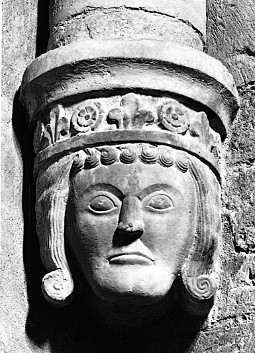
Birger Jarl, also known as Birger Magnusson, was a Swedish statesman and regent, jarl, and a member of the House of Bjälbo, who played a pivotal role in the consolidation of Sweden. His first marriage was to Princess Ingeborg of Sweden, which created his base of power. Birger led the Second Swedish Crusade, which established Swedish rule in Finland. Additionally, he is traditionally attributed with the foundation of the Swedish capital, Stockholm, around 1250. Birger used the Latin title of dux sveorum et guttorum.

Erik Eriksson, sometimes known as Erik XI or with the epithet the Lisp and Lame, was King of Sweden from 1222 to 1229 and again from 1234 to 1250. Being the last ruler of the House of Erik, he stood in the shadow of a succession of powerful jarls, especially his brother-in-law Birger Jarl, whose descendants ruled as kings after his death.

Johan Sverkersson, also known as John I, was King of Sweden from 1216 until his death in 1222. He was the last king from the House of Sverker, leaving no heirs. During his reign, an expedition was launched from Sweden against the Estonians, with disastrous results.

Erik Knutsson, sometimes known as Eric X, was King of Sweden between 1208 and 1216. Also known as Erik the Survivor, he was, at his accession to the throne, the only remaining son of King Knut Eriksson and his queen, whose name may have been Cecilia.
Sverker the Younger, also known as Sverker II or Sverker Karlsson, was King of Sweden from 1195 or 1196 to 1208 when he was defeated in the Battle of Lena by Erik Knutsson. Sverker died in the 1210 Battle of Gestilren where his forces battled those of King Erik Knutsson.

Knut Eriksson, also known as Canute I, was King of Sweden from 1173 to 1195. He was a son of King Erik the Saint and Queen Christina, who was a granddaughter of the Swedish king Inge the Elder.
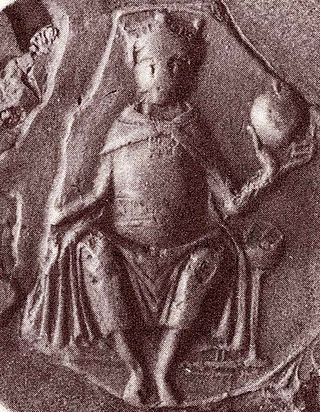
Karl Sverkersson or Charles VII was ruler of Götaland, and then King of Sweden from c. 1161 to 1167, when he was assassinated in a military attack by Knut Eriksson who succeeded him as king.
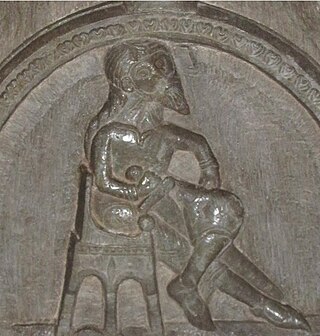
Sverker the Elder, also known as Sverker I, was King of Sweden from about 1132 until his murder. Of non-royal descent, he founded the House of Sverker, the rulers of which alternated with the rival House of Erik over the next century.

The House of Sverker were a powerful political force in medieval Sweden, contesting for royal power. Their origins were in Östergötland. After the extinction of the House of Stenkil and the ascension of Sverker I of Sweden in 1130, a civil war commenced. In the beginning, there were several pretenders, of whom Sverker I emerged as victorious, for a time. The antagonists in long run were finally the House of Sverker in Östergötland and the House of Eric in Västergötland and Uppland, which alternated on the throne for several generations, until in the 1220s the Eric dynasty got the upper hand, and the Sverker dynasty became extinct.
The Battle of Lena occurred on 31 January 1208 and probably took place near Kungslena, in the Tidaholm Municipality in Västergötland, Sweden. It was an important battle between the Danish-backed King Sverker II of Sweden and Prince Eric. Eric's forces won a crushing victory; however, in July 1210, Sverker returned with a second army and was killed in the Battle of Gestilren.

Birger Brosa was the jarl of Sweden from 1174 to 1202.
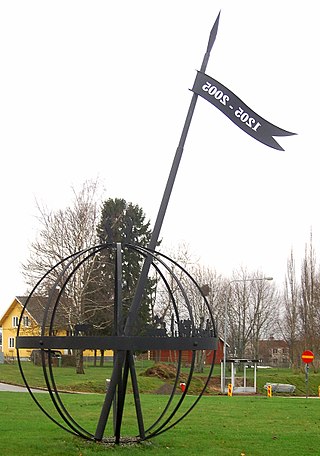
The Battle of Älgarås took place at the royal estate of Älgarås in northernmost Västergötland in November 1205 between the House of Sverker and the House of Eric who were fighting for the Swedish crown. The four sons of the former king Canute I fell out with King Sverker II in about 1204 and sought support among the Birkebeiner party in Norway. The Birkebeiner leader Jarl Håkon Galen married their cousin in January 1205 and promoted their claim. The brothers, of whom only Eric Knutsson is known by name, returned to Sweden in the same year. To which extent they had Norwegian military backing is unclear.
Magnus Minniskiöld was a medieval Swedish magnate from the House of Bjälbo. He is best known as the father of the renowned statesman Birger Jarl, and the ancestor of the later Swedish kings. He is sometimes believed to have perished in the Battle of Lena in 1208, though the evidence is not conclusive.
Christina of Denmark, was Queen of Sweden as the wife of King Erik the Saint, and the mother of King Knut Eriksson.
Magnus Henriksson, also known as Magnus II, was a Danish lord and King of Sweden between 1160 and 1161. He is often seen by posterity as a usurper.

Holmger Knutsson was a Swedish nobleman and a claimant to the Swedish throne during the reign of King Erik Eriksson.
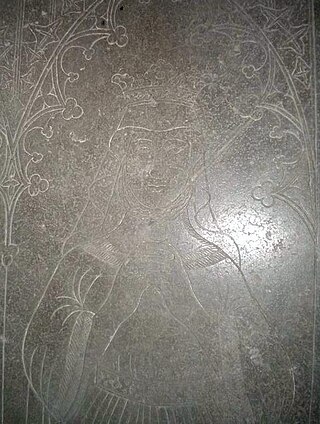
Rikissa of Denmark was Queen of Sweden as the wife of King Erik Knutsson, and the mother of King Erik Eriksson.

The Treaty of Lödöse was a peace treaty between the Swedish king Eric XI and the Norwegian king Haakon IV. The treaty was negotiated between King Haakon and the Jarl of Sweden, Birger Magnusson, in the town of Lödöse, during the summer of 1249. The main purpose of the treaty was to prevent mutual hostility from escalating into war. Some factions of the Swedish nobility wanted to attack Norway in retribution for a raid by King Haakon, which had targeted Norwegian rebels in the Swedish province of Värmland 24 years earlier.
IngegerdBirgersdotter was Queen of Sweden as the second wife of King Sverker II.

Bridget Haraldsdotter, also Brigida was Queen of Sweden as the spouse of King Magnus Henriksen.














